Picture this: your dog’s reaction when you open the door to reveal that first magical winter snowfall. Some dogs instantly transform into pure joy, leaping through drifts like they’ve discovered their personal paradise. Others? They take one look at that white, cold stuff and give you the most accusatory stare, as if you personally orchestrated this weather just to ruin their day.
The truth is, our canine companions are as individual as we are when it comes to weather preferences. While some breeds practically vibrate with excitement at the first snowflake, others would much rather curl up in their favorite sunny spot by the heater. Understanding your dog’s breed tendencies can help you provide the best care and ensure they’re comfortable year-round. Let’s explore which furry friends are snow angels and which ones prefer to be cozy couch potatoes.
Siberian Huskies: The Ultimate Snow Athletes
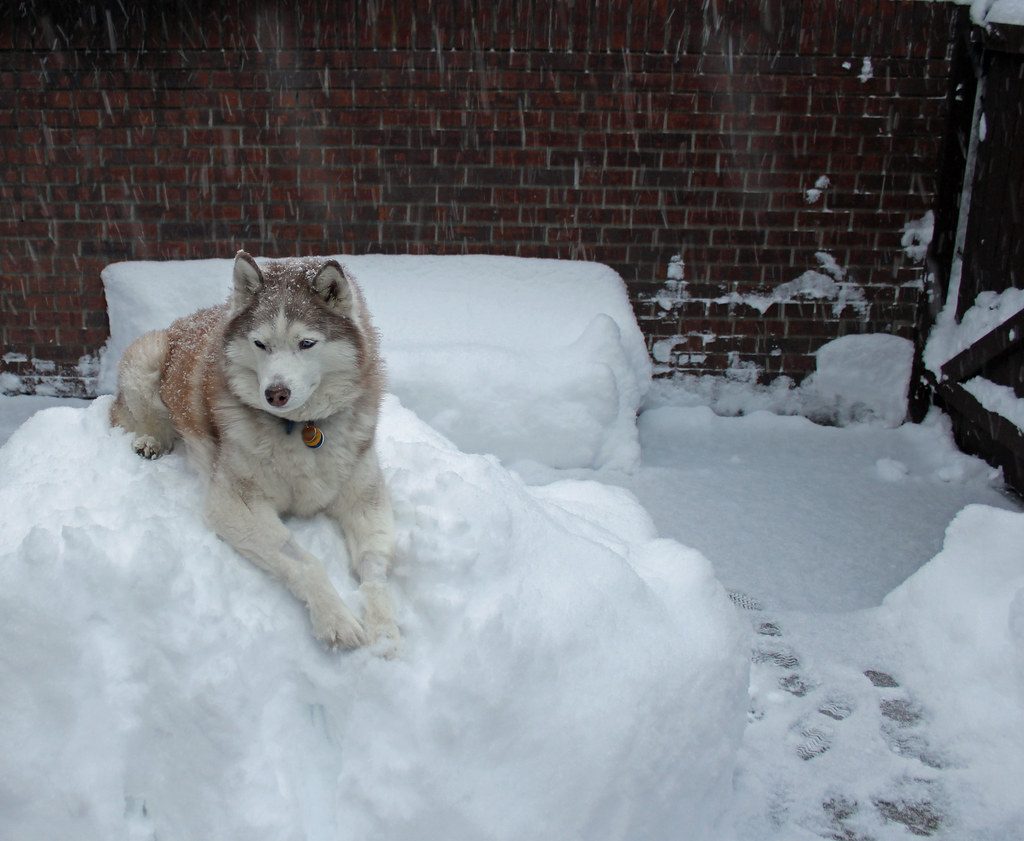
Originally bred by the Chukchi people of Siberia to pull sleds across frozen tundra, these athletic, pack mentality dogs thrive in snowy conditions and love outdoor adventures. With their thick double coat, boundless energy, and striking blue eyes, Siberian huskies were quite literally made for winter. When temperatures drop and snow starts falling, you’ll see these magnificent dogs come alive in ways that might surprise even experienced dog owners.
Their double coat isn’t just for show; cold-weather dogs have thick double coats to keep them warm in snow and freezing temperatures. Watching a Husky bound through deep snow is like witnessing pure canine bliss. They’ll often choose to sleep outside in winter, preferring the cold ground to a warm indoor bed, much to their owners’ amazement.
Alaskan Malamutes: The Arctic Powerhouses
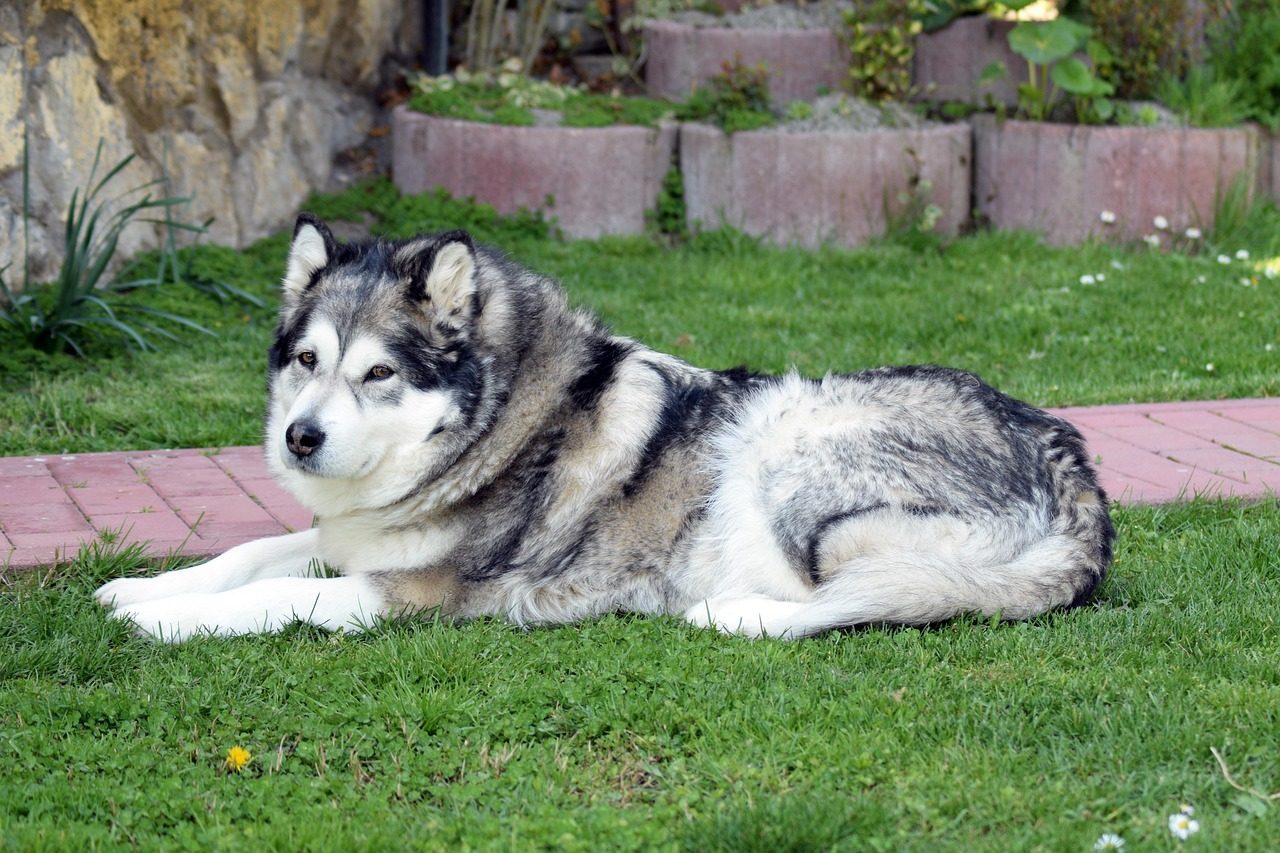
Originally bred by the Inuit to pull heavy sleds across frozen terrain, this powerful breed was built for endurance in extreme cold. Their thick double coat, strong muscles, and snowshoe-like paws make them perfectly suited for winter weather. These gentle giants possess an almost supernatural ability to work in conditions that would send most dogs running for shelter.
What makes Malamutes particularly special is their work ethic combined with their love of family time. Beneath their rugged exterior, malamutes are affectionate, loyal companions who love spending time with their families – especially if it involves outdoor adventures in the snow. They need substantial exercise, and winter provides the perfect playground for their energy levels.
Saint Bernards: The Gentle Snow Giants
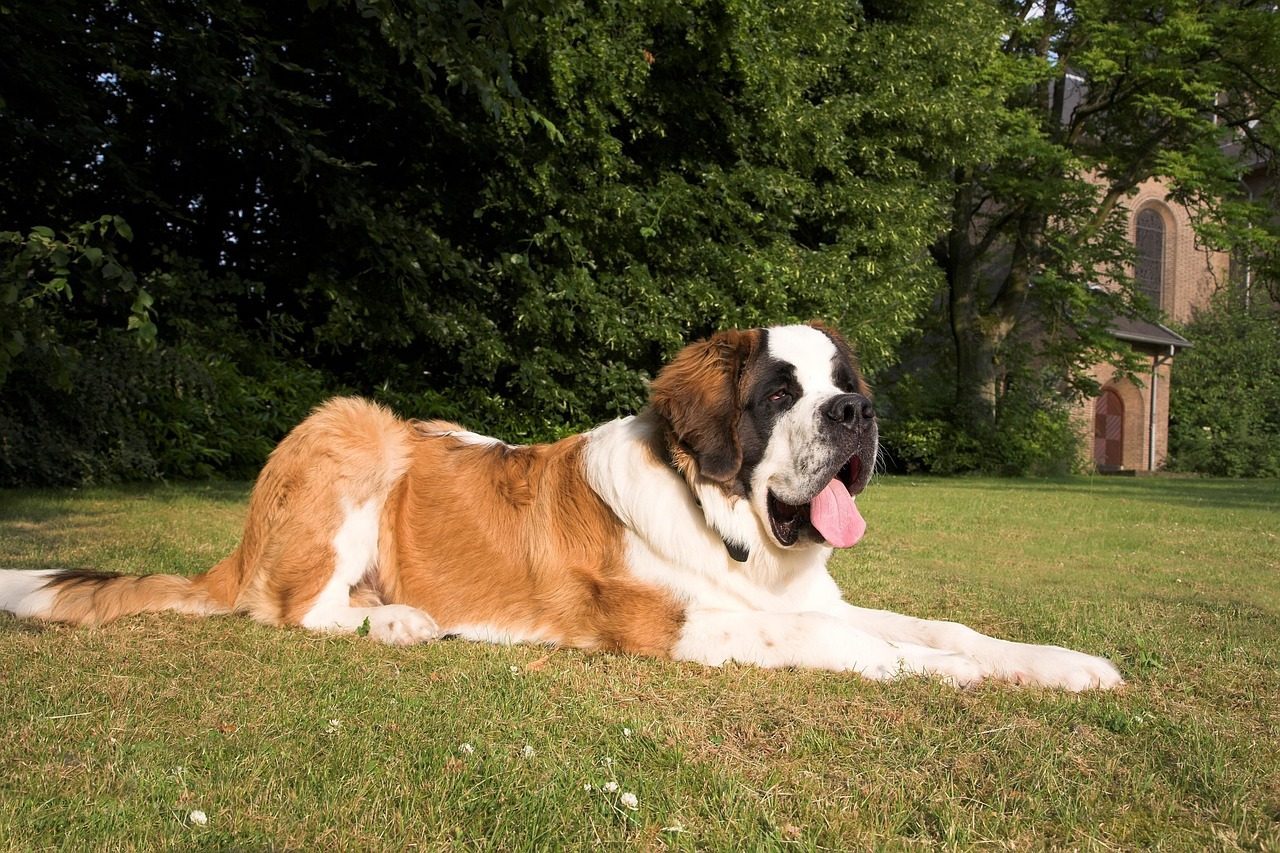
The Saint Bernard is the epitome of a snow dog – for centuries, they have been used as search and rescue dogs to find people buried under snow. These massive, gentle souls have earned legendary status for their mountain rescue work in the Swiss Alps. Their calm demeanor masks an incredible tolerance for harsh winter conditions that would challenge even the most seasoned outdoor enthusiasts.
These dogs have historically braved harsh snowstorms to save people stranded in the Swiss Alps. With their massive size and thick fur, these gentle giants are made for cold weather. However, what truly sets them apart is their intuitive understanding of weather conditions and their natural protective instincts, making them ideal companions for winter activities.
Samoyeds: The Smiling Snow Angels
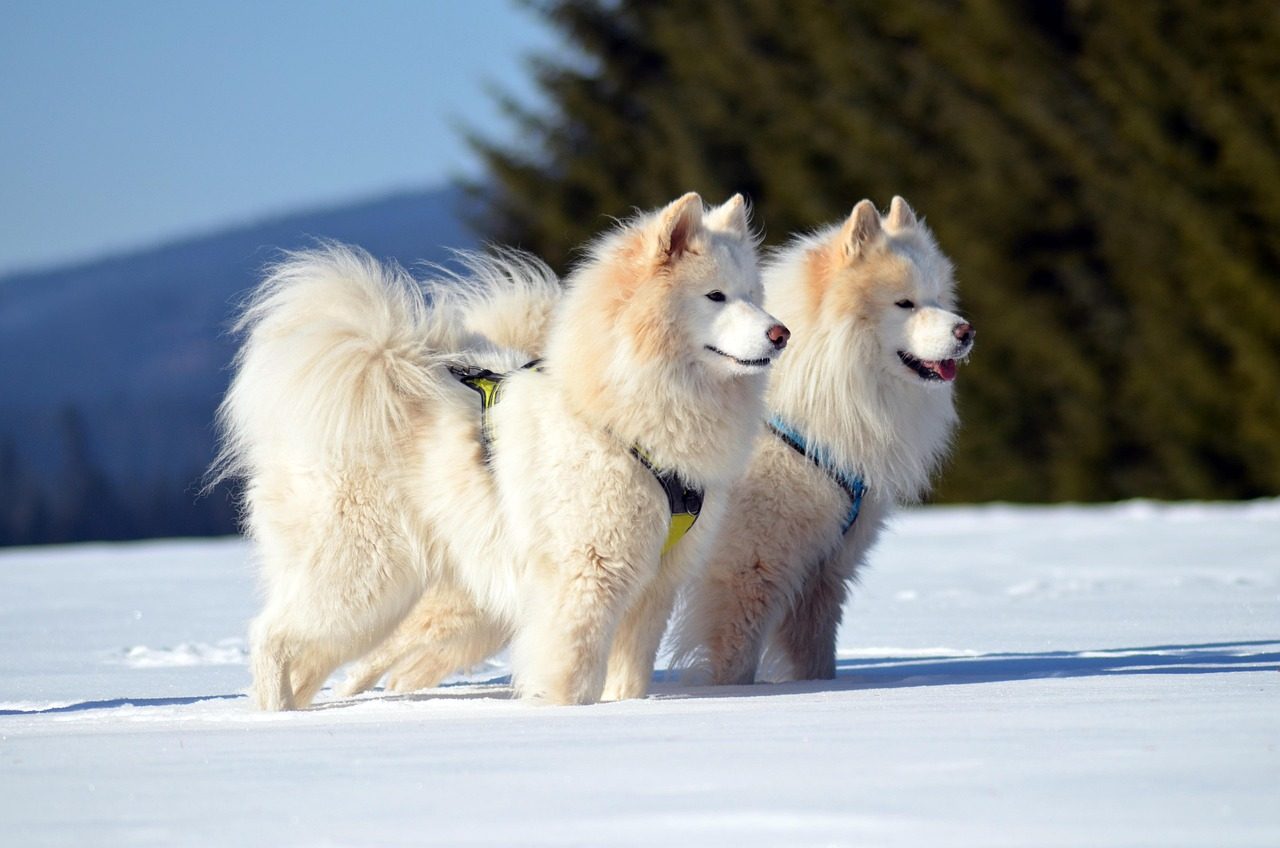
Known for their “Sammy smiles” and fluffy white coats, Samoyeds are incredibly friendly and versatile dogs. Originally bred to herd reindeer and pull sleds in Siberia, these dogs can handle subzero temperatures and still look like they’re having the time of their lives. Their infectious happiness seems to amplify in winter weather, making them perfect companions for snow-filled adventures.
Samoyeds were even a part of some early expeditions to the South Pole. Today, this breed simply loves playing in the snow, making Sammies the perfect winter companions. Their social nature means they’ll gladly involve the whole family in their snow games, often initiating impromptu wrestling matches in snowdrifts.
Newfoundlands: The Swimming Snow Bears
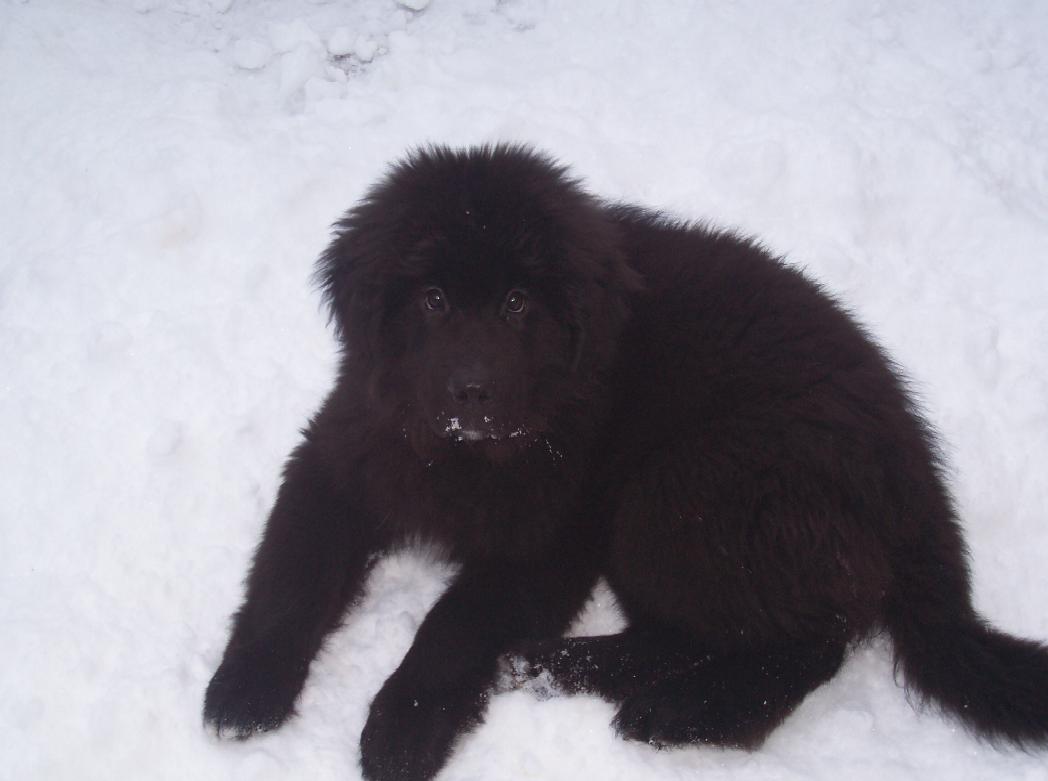
Newfoundlands – commonly called Newfies – come from Newfoundland, Canada, and are well-suited to winter. These large, powerful dogs were bred to work, helping sailors on ships and pulling carts. Their webbed feet and water-resistant coat make them exceptional swimmers, but they’re equally impressive trudging through deep snow with their characteristic calm confidence.
The Newfoundland has a heavy coat that protected it from the icy waters it was originally bred to work in, making it ideal for colder weather. These Canadian dogs are still used in water rescues today, but don’t be fooled by their swimming skills – a double coat and a strong body make it ideal for mountains, too.
Bernese Mountain Dogs: The Swiss Winter Treasures
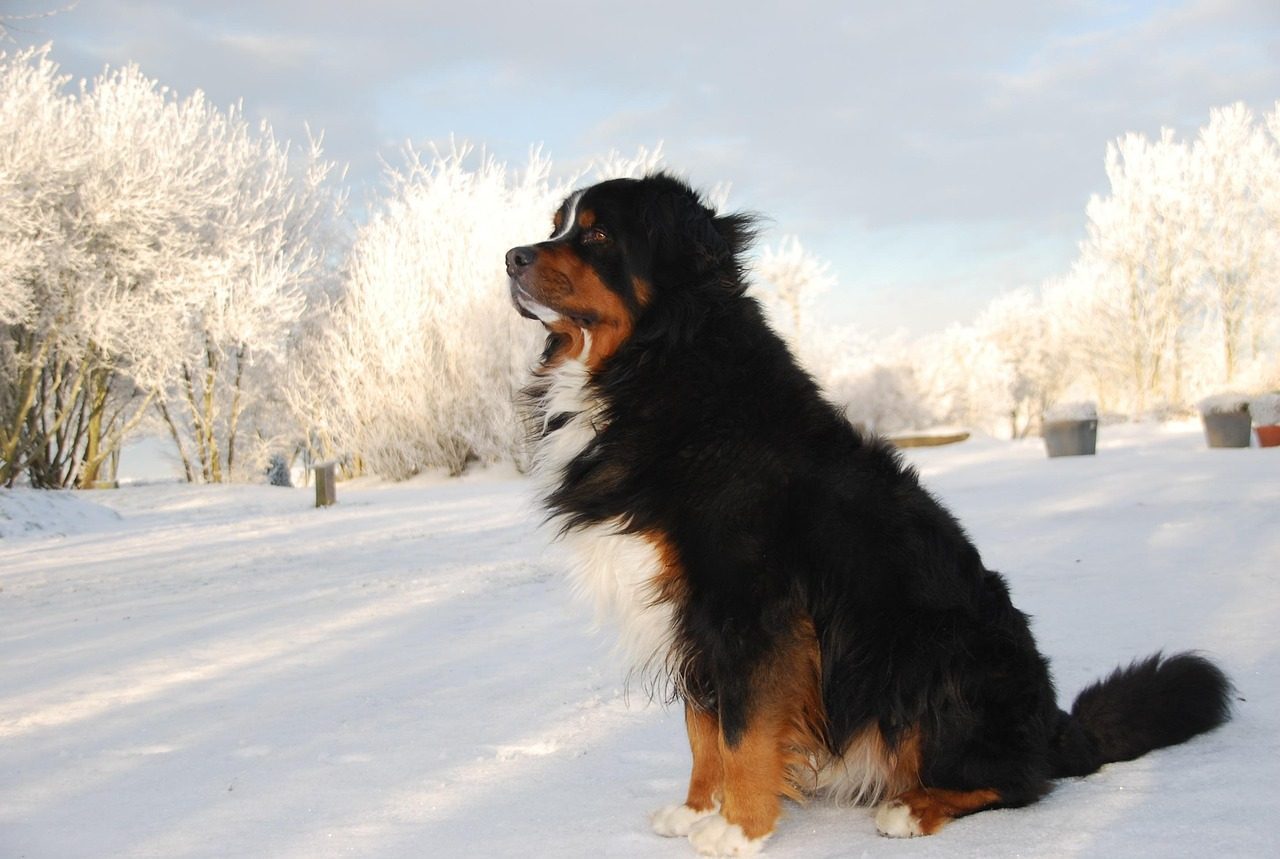
Originating in the Swiss Alps, the Bernese Mountain Dog worked alongside farmers to herd cattle, guard livestock, and haul dairy products through the hills and valleys of Bern. Generations of pulling carts and wagons in rugged, snowy terrain built their strength and resilience to make them not only a classic mountain dog breed, but also true cold weather dogs.
These tri-colored beauties possess a gentle temperament that makes them wonderful family dogs, even in harsh weather conditions. Their thick coat and sturdy build allow them to comfortably navigate snowy terrain while maintaining their characteristic calm, patient demeanor that families adore.
Chow Chows: The Lion-Maned Winter Warriors
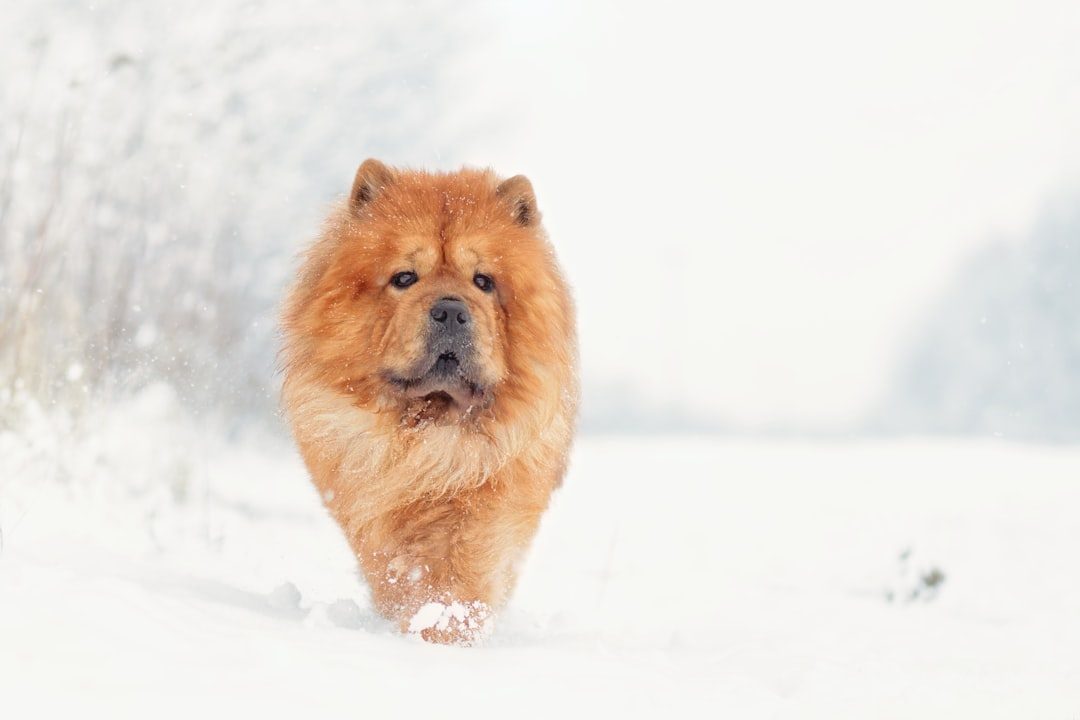
Chow Chows are perhaps best known for their black tongues and wooly coats, which make them extremely tolerant to cold temperatures. “If you love the outdoors and are owned by a Chow Chow, then you should take him or her everywhere you go in the snow,” says Pat Foose, co-owner of Colorado-based Pendleton Chows.
The Chow Chow is one of the oldest dog breeds, shown in artifacts dating back to China’s Han Dynasty (c. 200 BCE to 200 CE). Like other cold-weather dogs, they have a thick double coat that sheds heavily and needs consistent at-home grooming. Their dignified nature and impressive cold tolerance make them excellent winter companions for those who appreciate their independent spirit.
Norwegian Elkhounds: The Viking Winter Hunters
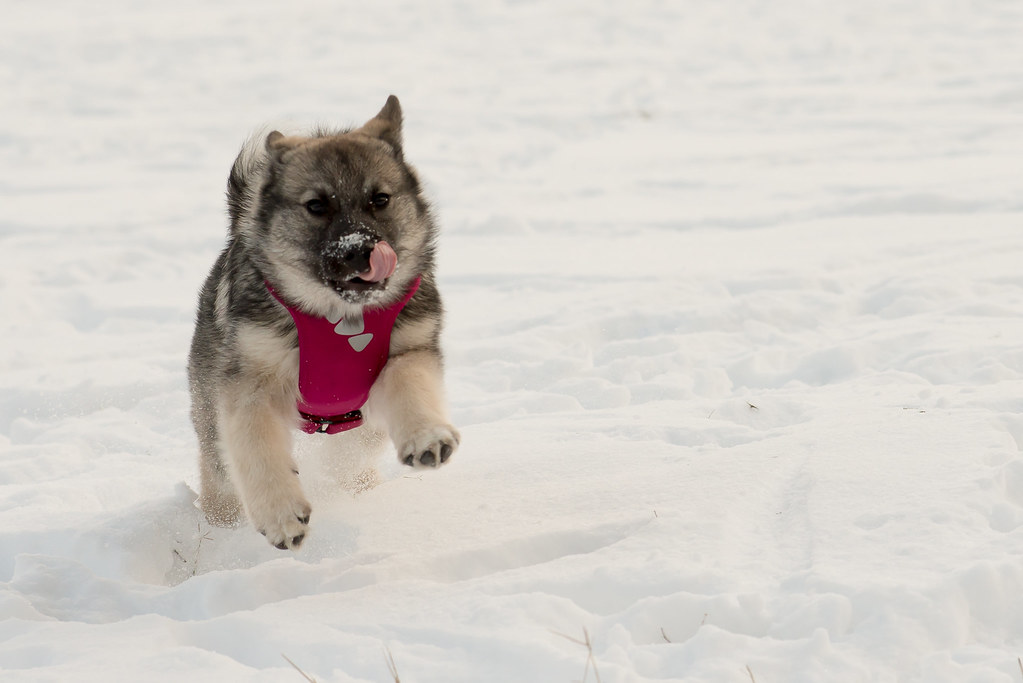
Norwegian Elkhounds are cold weather dogs dating back to the Vikings. Now the national dog of Norway, Elkhounds were originally used as hunting dogs. Always ready for adventure – especially in the snow – the high-energy Norwegian Elkhound has a smooth outer coat and a wooly undercoat.
Their hunting heritage means they possess incredible stamina and a love for outdoor exploration that intensifies in winter weather. These compact, sturdy dogs can handle extended periods in cold conditions while maintaining their alertness and enthusiasm for adventure, making them ideal partners for winter hiking or skiing.
Great Pyrenees: The Mountain Guardians
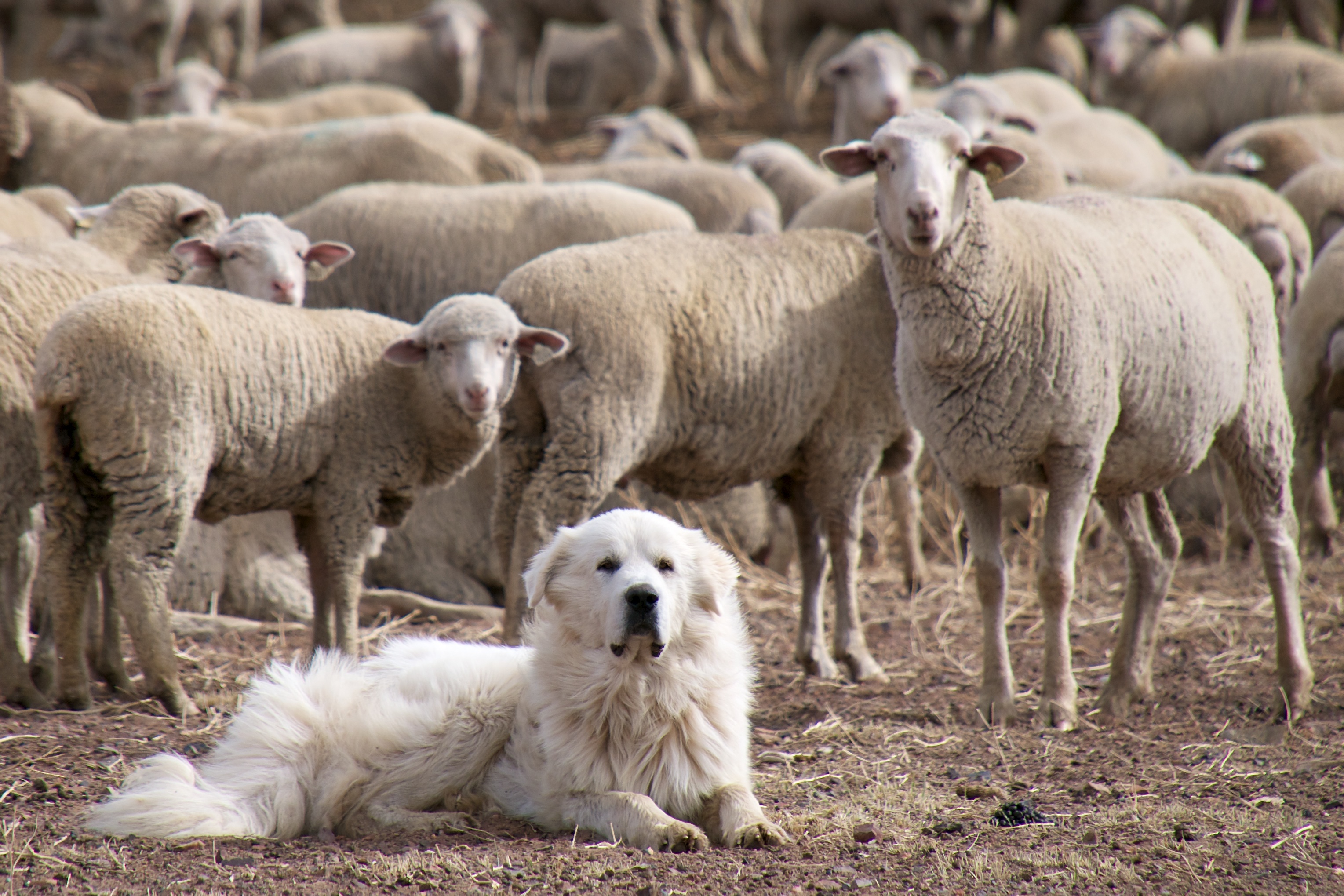
The Great Pyrenees were once used to herd livestock on steep mountain slopes of France and will eagerly embark on a tough, rugged hike. These dogs, which typically weigh 85 to 160 pounds, are elegant and calm – they were, after all, the Royal Dog of France.
“They love winter. Their thick, double coat protects them from all but the most artic of temperatures.” Their natural guarding instincts combined with their cold weather prowess make them excellent companions for those who enjoy winter activities in more remote or challenging terrain.
Akitas: The Japanese Snow Samurai
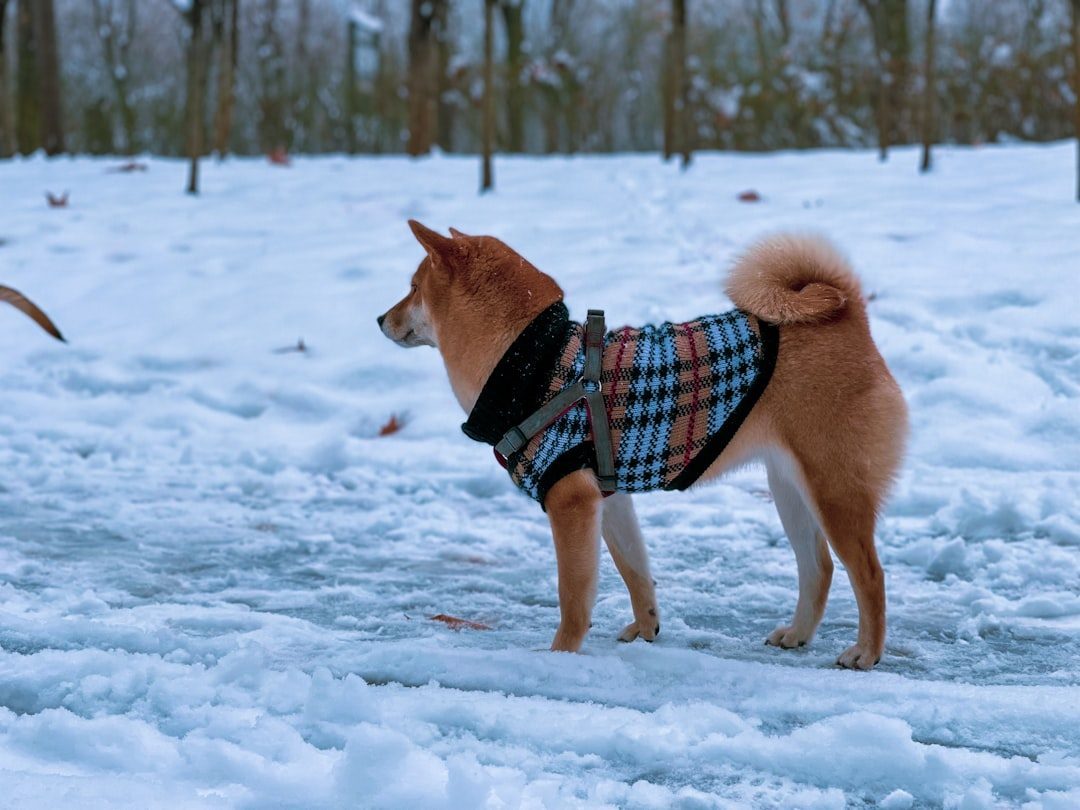
The Akita is a Japanese dog that thrives in cold weather! They’re one of the world’s oldest dog breeds, originating thousands of years ago in the snowy mountains of northern Japan. Bred by the Matagi people to hunt large game like bears and to guard homes, the Akita is strong, courageous, and able to thrive in harsh winter conditions.
Majestic, loyal, and built for the cold, Akitas were bred in the snowy mountains of Japan to guard and hunt alongside their owners. Their dense double coat protects them from freezing temperatures, while their bold and confident nature makes them natural protectors. Calm yet courageous, Akitas love winter weather – whether they’re patrolling the yard or playing in the snow with their people.
Tibetan Mastiffs: The Himalayan Giants
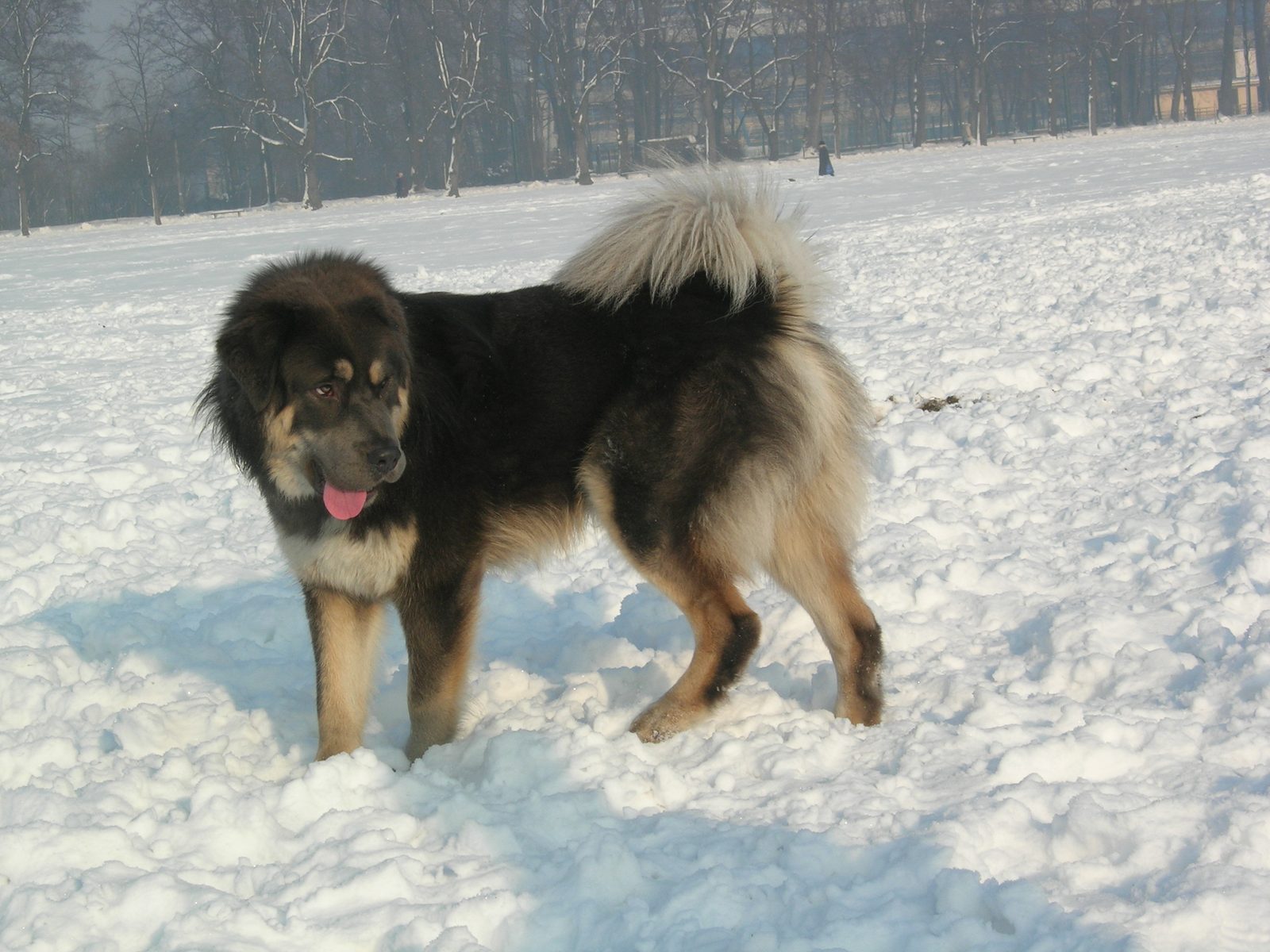
The Tibetan Mastiff is an ancient breed that spent thousands of years guarding homes and temples in Tibet, a region high in the Himalayas. Bred by nomadic peoples to withstand extreme altitudes and subzero temperatures, Tibetan Mastiffs developed a dense coat, imposing size, and protective nature.
Bred to guard monasteries and herds high in the Himalayas, Tibetan mastiffs are true cold-weather powerhouses. Their massive frame and dense double coat are built to withstand freezing mountain climates, keeping them warm even in heavy snow. Independent, intelligent, and fiercely loyal, they’re natural protectors who bond deeply with their families. While they may look intimidating, these majestic dogs are gentle at heart – at their best when watching over loved ones from their snowy perch.
Chihuahuas: The Tiny Heat Seekers
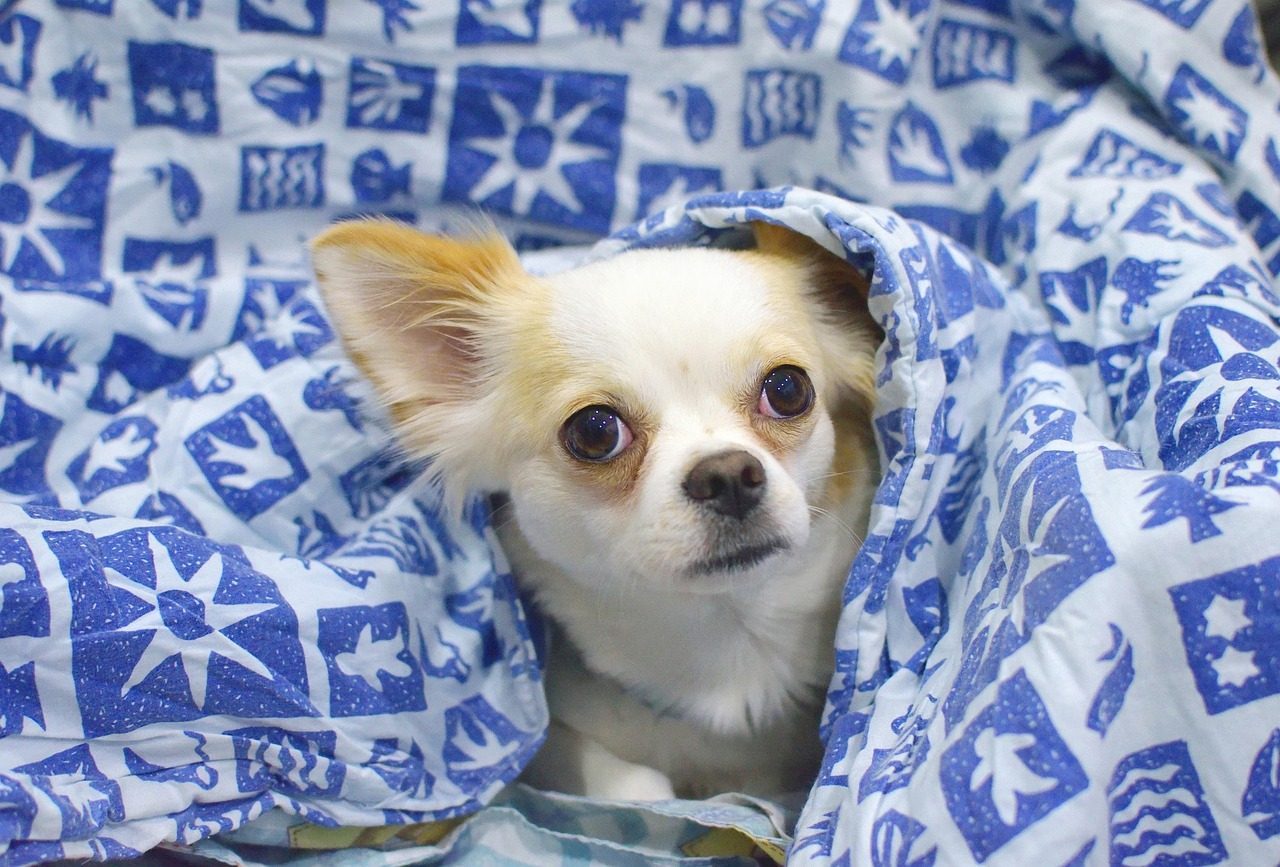
Another breed used to high temps is the Chihuahua. It’s probably the centuries spent in the Mexican sunshine that made these tiny cuddlers so keen on heat. In fact, even on cold summer nights it might be good to offer them sweaters. These pint-sized personalities are the complete opposite of snow dogs, preferring warmth and comfort over outdoor winter adventures.
Tiny and lightweight, Chihuahuas are particularly sensitive to the cold. Weighing up to 6 pounds, these small dogs hail from Mexico’s warm climate and can lose body heat quickly in colder temperatures. You’ll often find them burrowing under blankets or seeking out the warmest spot in the house, showing clear preference for indoor comfort during colder months.
Italian Greyhounds: The Elegant Indoor Loungers
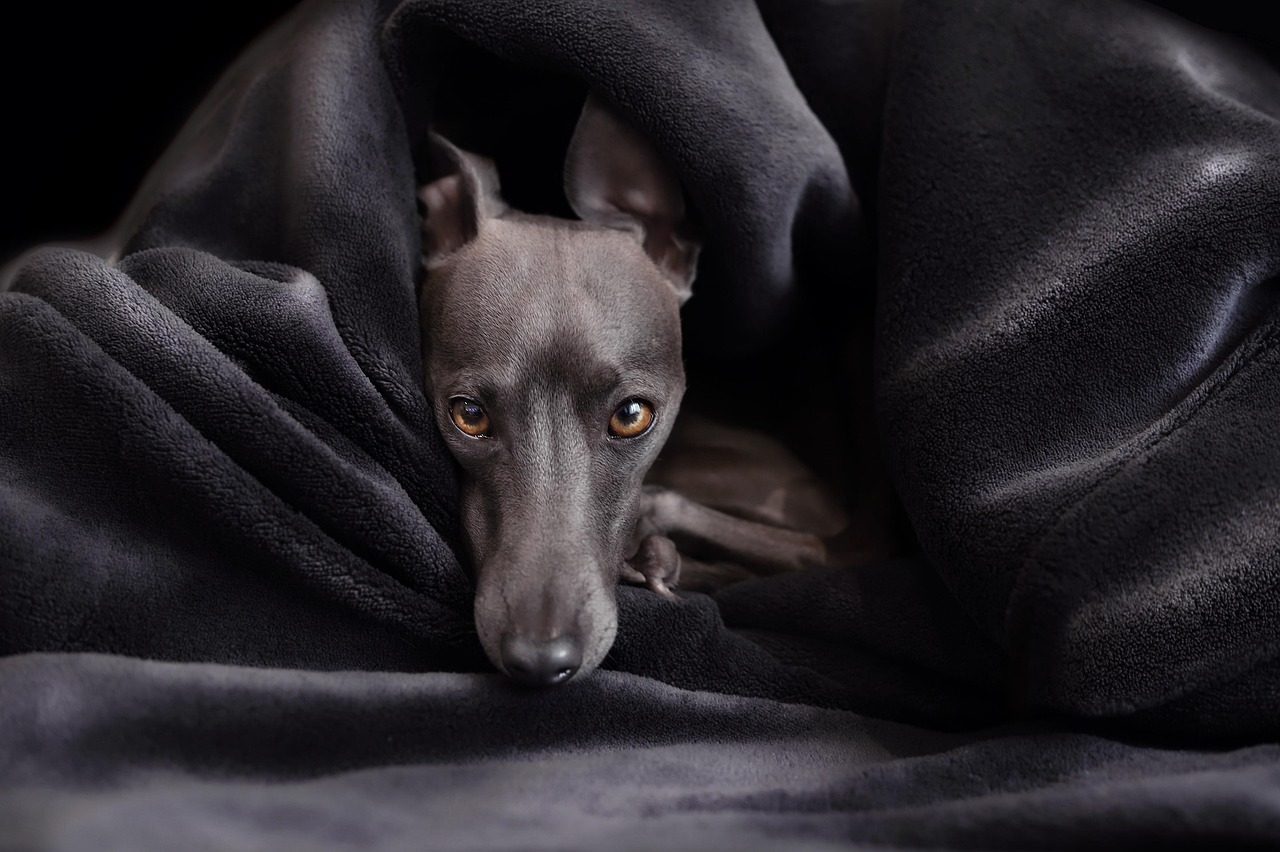
Similar to their larger Greyhound cousins, Italian Greyhounds have very little fat and short, fine coats. They are highly susceptible to the cold and often require warm clothing indoors and out during winter. These delicate, graceful dogs are much happier curled up on a warm lap than venturing into cold weather.
Italian greyhounds are sensitive to cold weather, but actually do quite well in warmer climates. Because they’re small-to-medium size dogs, they also adapt well to smaller homes. These fun, affectionate dogs don’t even need that much floor space, as they prefer to snooze on a warm lap rather than the floor.
French Bulldogs: The Cozy Apartment Companions
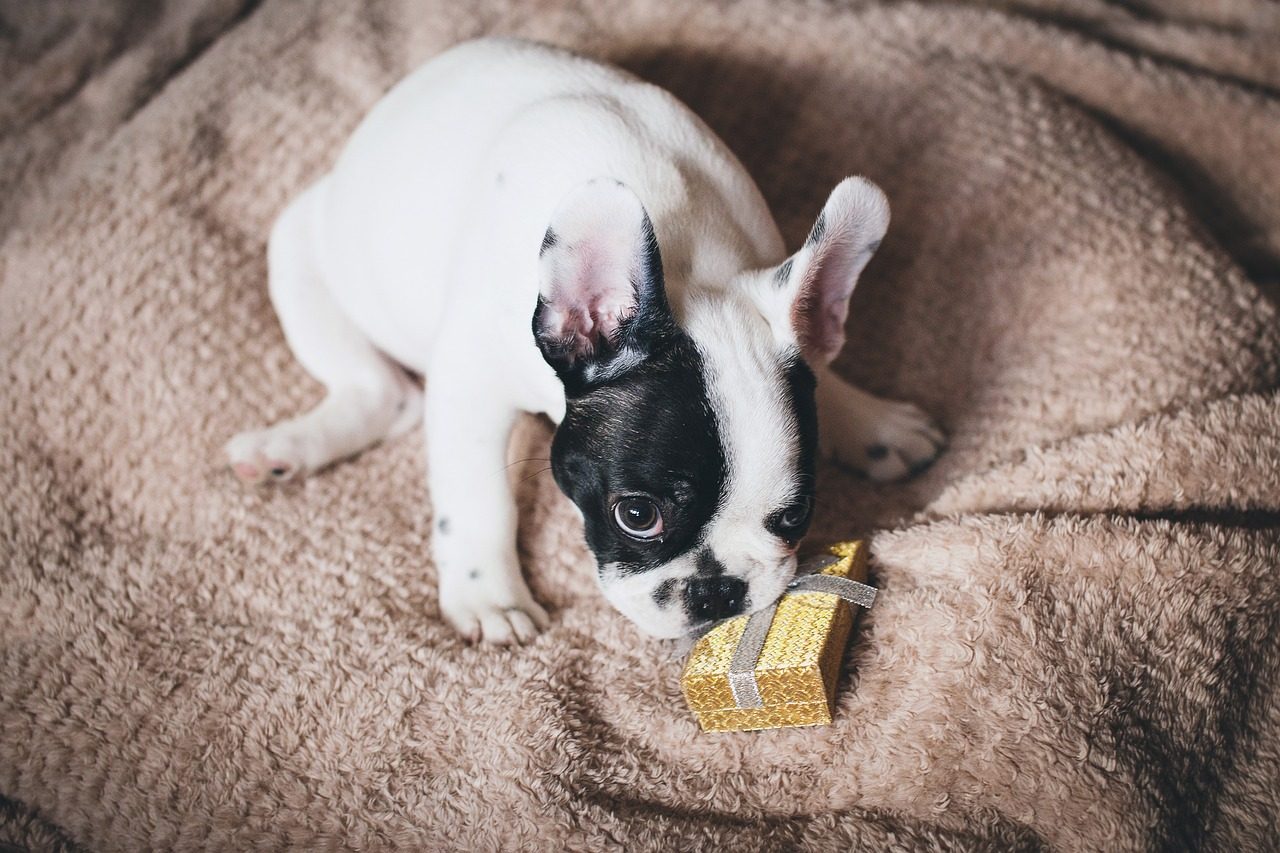
French Bulldogs have a short, thin coat that doesn’t offer much warmth, and their flat faces make it harder for them to regulate their temperature in extreme weather. While a cozy sweater or jacket can help protect them from the cold, prolonged exposure to freezing conditions is not safe for Frenchies.
French Bulldogs, with their short coats and compact build, are particularly sensitive to cold climates. Their flat faces and stocky bodies contribute to limited air circulation, making them more prone to temperature-related discomfort. These charming companions much prefer climate-controlled environments where they can be close to their favorite humans.
Pugs: The Wrinkled Indoor Royalty
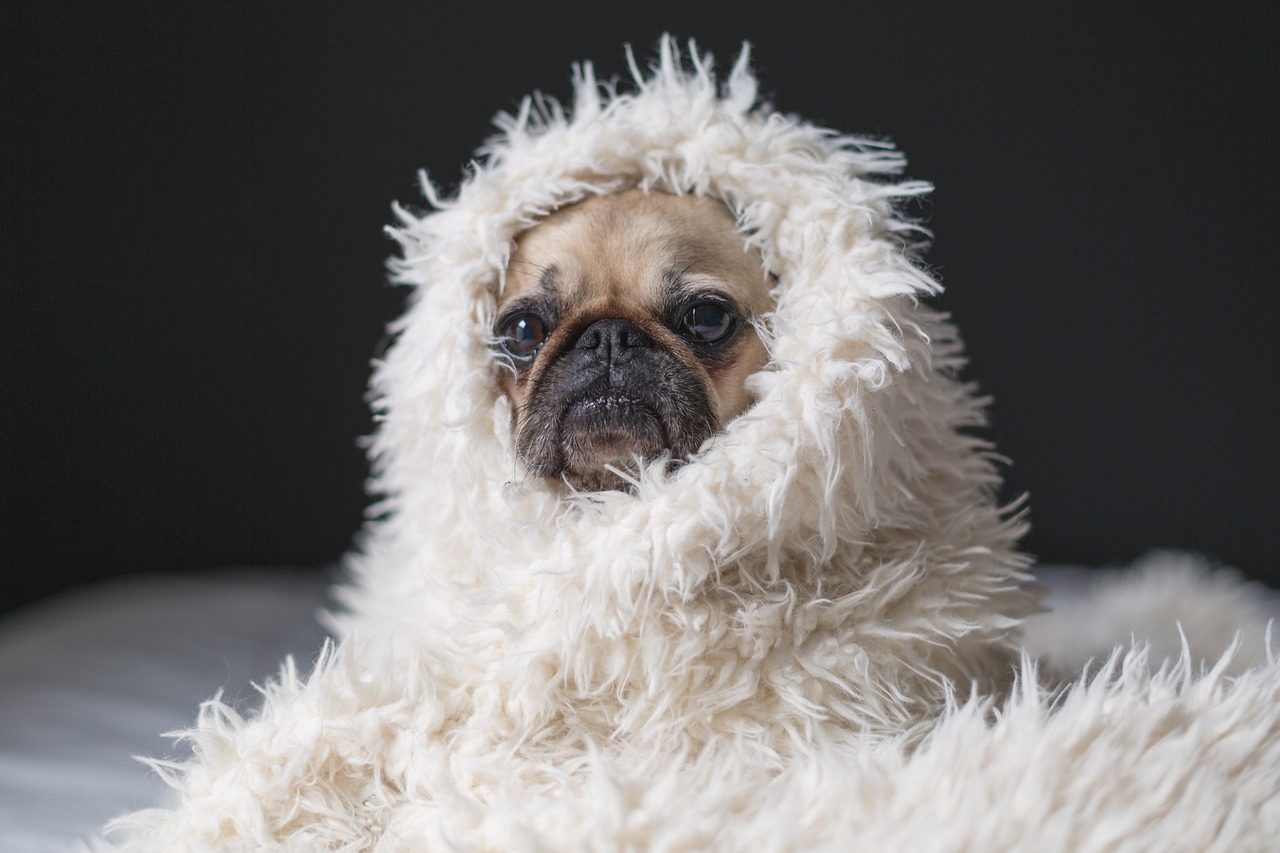
A Pug’s wrinkly, smooshed face is adorable, but don’t expect these brachycephalic dogs to keep up with you when the weather turns warm. Pugs can’t easily cool themselves by panting, so when the weather turns hot and humid, keep your pup inside. On the plus side, these pups are known to be couch potatoes, so a short evening walk or a burst of indoor play is enough to fill this breed’s exercise agenda.
Pugs, like French Bulldogs, have short muzzles and minimal fur, making them prone to cold intolerance. They’ll appreciate a cozy environment indoors and appropriate clothing when outdoors. Their preference for comfort over adventure makes them perfect lap dogs for those who enjoy quieter, indoor lifestyles.
Greyhounds: The Gentle Speed Demons Who Love Warmth

Known for their sleek, athletic build, Greyhounds have very little body fat and short fur. This makes them ill-suited for cold weather, despite their graceful demeanor. Cozy clothing and limited outdoor time in winter are essential for these sensitive pups.
Their thin coats and lean bodies help greyhounds manage body heat effectively. They enjoy lounging indoors and need safe sprinting spaces outdoors. Ideal owner: Owners who can provide both a cozy indoor environment and room to run (whether that’s leashed for a run through the neighborhood, in your yard, or at the dog park). Despite their racing background, they’re surprisingly low-energy indoors and love nothing more than a warm, soft place to rest.
Boston Terriers: The Dapper Indoor Gentlemen
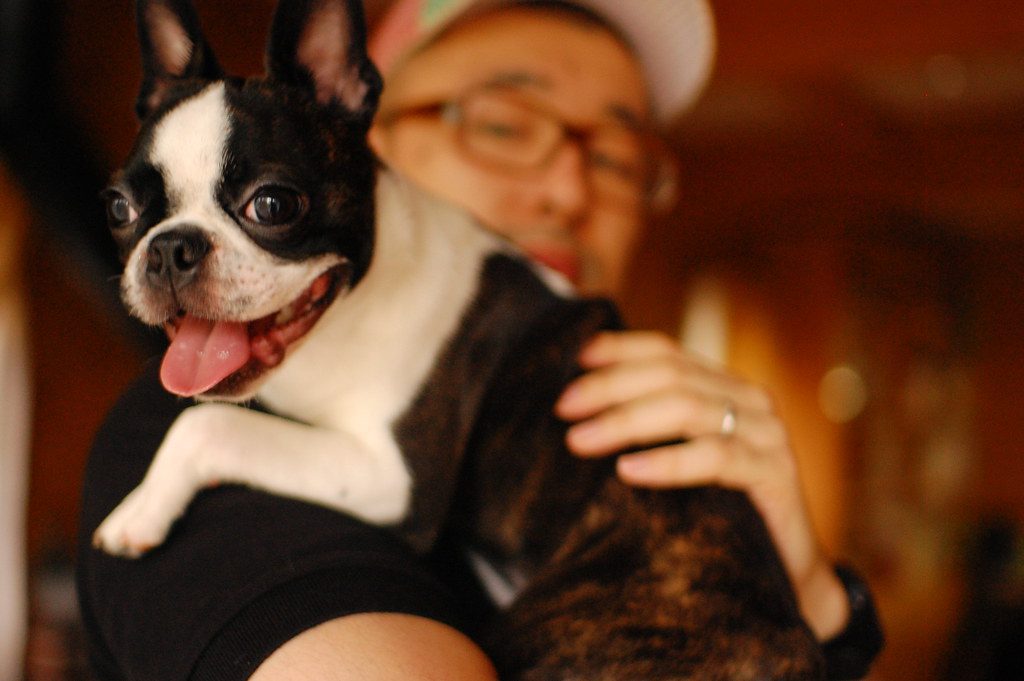
Boston Terriers have short, smooth coats that don’t provide much protection against the cold. Their compact, muscular bodies are better suited for moderate climates, so bundling them up in colder weather is essential. These “American Gentlemen” are much more comfortable in controlled indoor environments where they can showcase their charming personalities without weather-related stress.
Boston Terrier – While playful and full of energy, their short coats don’t offer much protection against winter temperatures. If your pup falls into this category, consider layering them up with a cozy fleece or insulated jacket before heading out for winter walks. Their social nature and moderate exercise needs make them perfect indoor companions who appreciate short, supervised outdoor time.
Chinese Crested: The Delicate Indoor Beauties
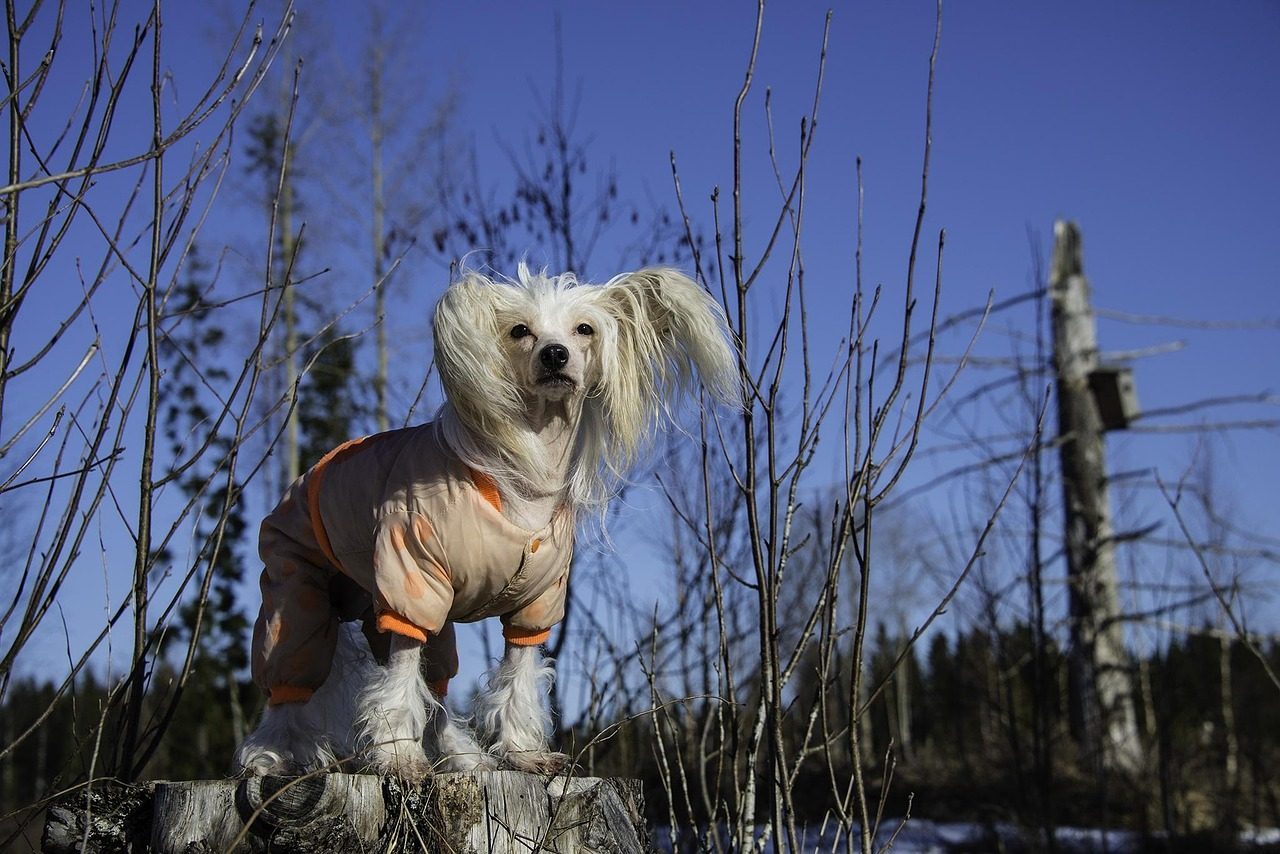
This mostly hairless breed is especially vulnerable to cold weather. While their unique appearance sets them apart, it also means they need plenty of protection from the cold, including sweaters, blankets, and heated indoor spaces. Their lack of fur makes temperature regulation challenging, requiring extra attention to keep them comfortable.
The Chinese Crested is a delightful breed known for its intelligence, affection, and playful nature. These dogs are content with minimal exercise and love to be cozy lap-warmers. However, their hairless variety, in particular, is sensitive to cold weather due to its thin fur layer. In winter, a sweater is essential for Chinese Cresteds to keep them warm, though it’s important to choose one that’s not made of wool, as many are allergic to it.
Conclusion
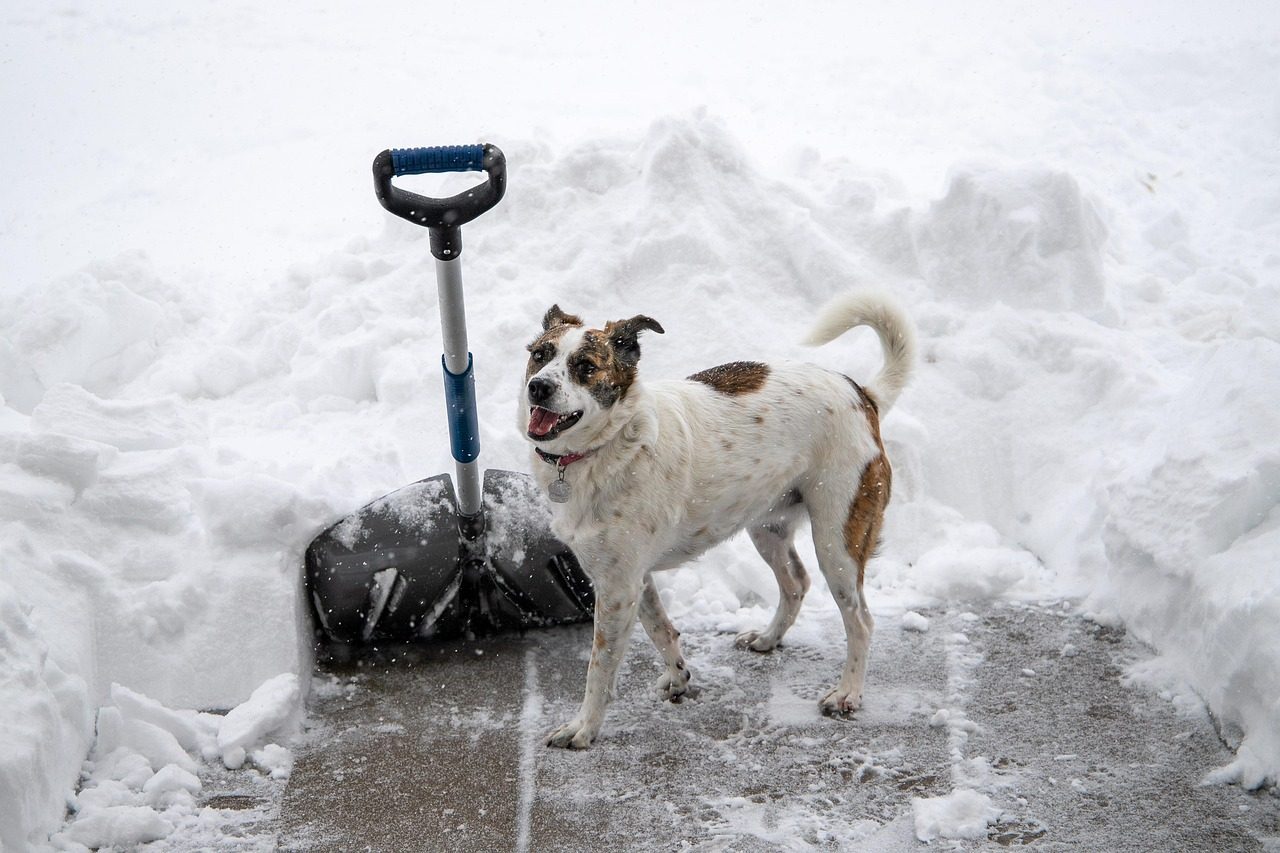
Understanding your dog’s weather preferences isn’t just about comfort – it’s about ensuring their health, happiness, and quality of life throughout the year. Whether you have a snow-loving Husky who transforms into a winter athlete or a heat-seeking Chihuahua who prefers sunbeams and soft blankets, recognizing these natural tendencies helps you become a better pet parent.
The breeds that love winter snow bring energy, adventure, and joy to cold-weather activities, while those that prefer cozy indoor days offer companionship, warmth, and the perfect excuse to spend more time curled up together. Both types of dogs have their own special magic – it’s just a matter of matching their needs with the right environment and care. What type of weather companion does your furry friend turn out to be?

Andrew Alpin from India is the Brand Manager of Doggo digest. Andrew is an experienced content specialist and social media manager with a passion for writing. His forte includes health and wellness, Travel, Animals, and Nature. A nature nomad, Andrew is obsessed with mountains and loves high-altitude trekking. He has been on several Himalayan treks in India including the Everest Base Camp in Nepal.






